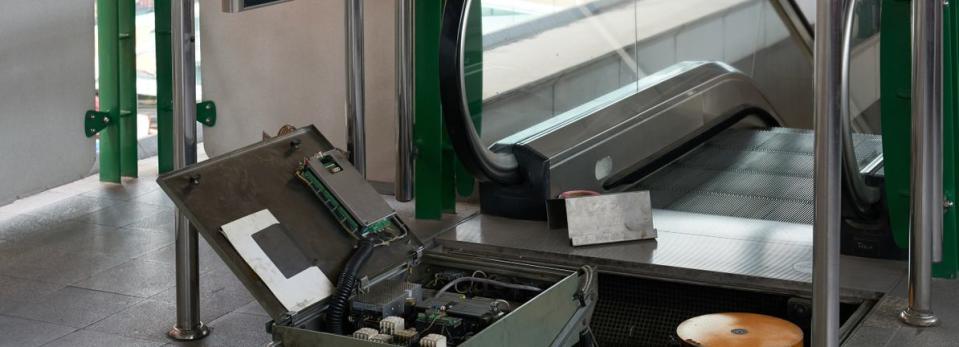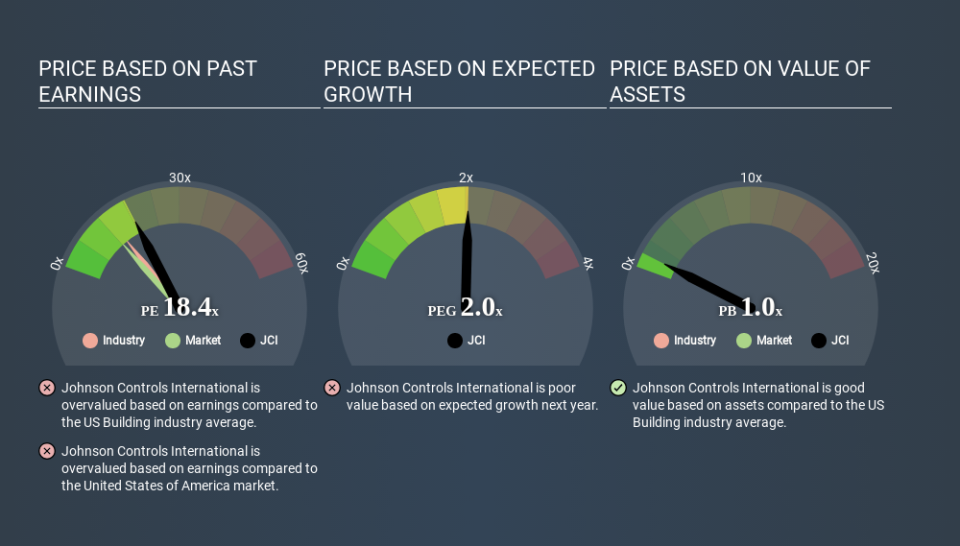What Is Johnson Controls International's (NYSE:JCI) P/E Ratio After Its Share Price Tanked?

Unfortunately for some shareholders, the Johnson Controls International (NYSE:JCI) share price has dived 33% in the last thirty days. The recent drop has obliterated the annual return, with the share price now down 30% over that longer period.
All else being equal, a share price drop should make a stock more attractive to potential investors. In the long term, share prices tend to follow earnings per share, but in the short term prices bounce around in response to short term factors (which are not always obvious). So, on certain occasions, long term focussed investors try to take advantage of pessimistic expectations to buy shares at a better price. Perhaps the simplest way to get a read on investors' expectations of a business is to look at its Price to Earnings Ratio (PE Ratio). A high P/E implies that investors have high expectations of what a company can achieve compared to a company with a low P/E ratio.
See our latest analysis for Johnson Controls International
Does Johnson Controls International Have A Relatively High Or Low P/E For Its Industry?
Johnson Controls International's P/E of 18.40 indicates some degree of optimism towards the stock. As you can see below, Johnson Controls International has a higher P/E than the average company (13.7) in the building industry.
Johnson Controls International's P/E tells us that market participants think the company will perform better than its industry peers, going forward. Clearly the market expects growth, but it isn't guaranteed. So further research is always essential. I often monitor director buying and selling.
How Growth Rates Impact P/E Ratios
Earnings growth rates have a big influence on P/E ratios. When earnings grow, the 'E' increases, over time. That means even if the current P/E is high, it will reduce over time if the share price stays flat. A lower P/E should indicate the stock is cheap relative to others -- and that may attract buyers.
Johnson Controls International's earnings per share fell by 5.7% in the last twelve months. But EPS is up 7.5% over the last 3 years. And EPS is down 8.7% a year, over the last 5 years. So we might expect a relatively low P/E.
Remember: P/E Ratios Don't Consider The Balance Sheet
The 'Price' in P/E reflects the market capitalization of the company. In other words, it does not consider any debt or cash that the company may have on the balance sheet. Hypothetically, a company could reduce its future P/E ratio by spending its cash (or taking on debt) to achieve higher earnings.
Spending on growth might be good or bad a few years later, but the point is that the P/E ratio does not account for the option (or lack thereof).
How Does Johnson Controls International's Debt Impact Its P/E Ratio?
Johnson Controls International has net debt equal to 26% of its market cap. While that's enough to warrant consideration, it doesn't really concern us.
The Verdict On Johnson Controls International's P/E Ratio
Johnson Controls International trades on a P/E ratio of 18.4, which is above its market average of 12.2. With some debt but no EPS growth last year, the market has high expectations of future profits. What can be absolutely certain is that the market has become significantly less optimistic about Johnson Controls International over the last month, with the P/E ratio falling from 27.6 back then to 18.4 today. For those who don't like to trade against momentum, that could be a warning sign, but a contrarian investor might want to take a closer look.
Investors should be looking to buy stocks that the market is wrong about. If the reality for a company is better than it expects, you can make money by buying and holding for the long term. So this free visual report on analyst forecasts could hold the key to an excellent investment decision.
Of course you might be able to find a better stock than Johnson Controls International. So you may wish to see this free collection of other companies that have grown earnings strongly.
If you spot an error that warrants correction, please contact the editor at editorial-team@simplywallst.com. This article by Simply Wall St is general in nature. It does not constitute a recommendation to buy or sell any stock, and does not take account of your objectives, or your financial situation. Simply Wall St has no position in the stocks mentioned.
We aim to bring you long-term focused research analysis driven by fundamental data. Note that our analysis may not factor in the latest price-sensitive company announcements or qualitative material. Thank you for reading.

 Yahoo Finance
Yahoo Finance 
